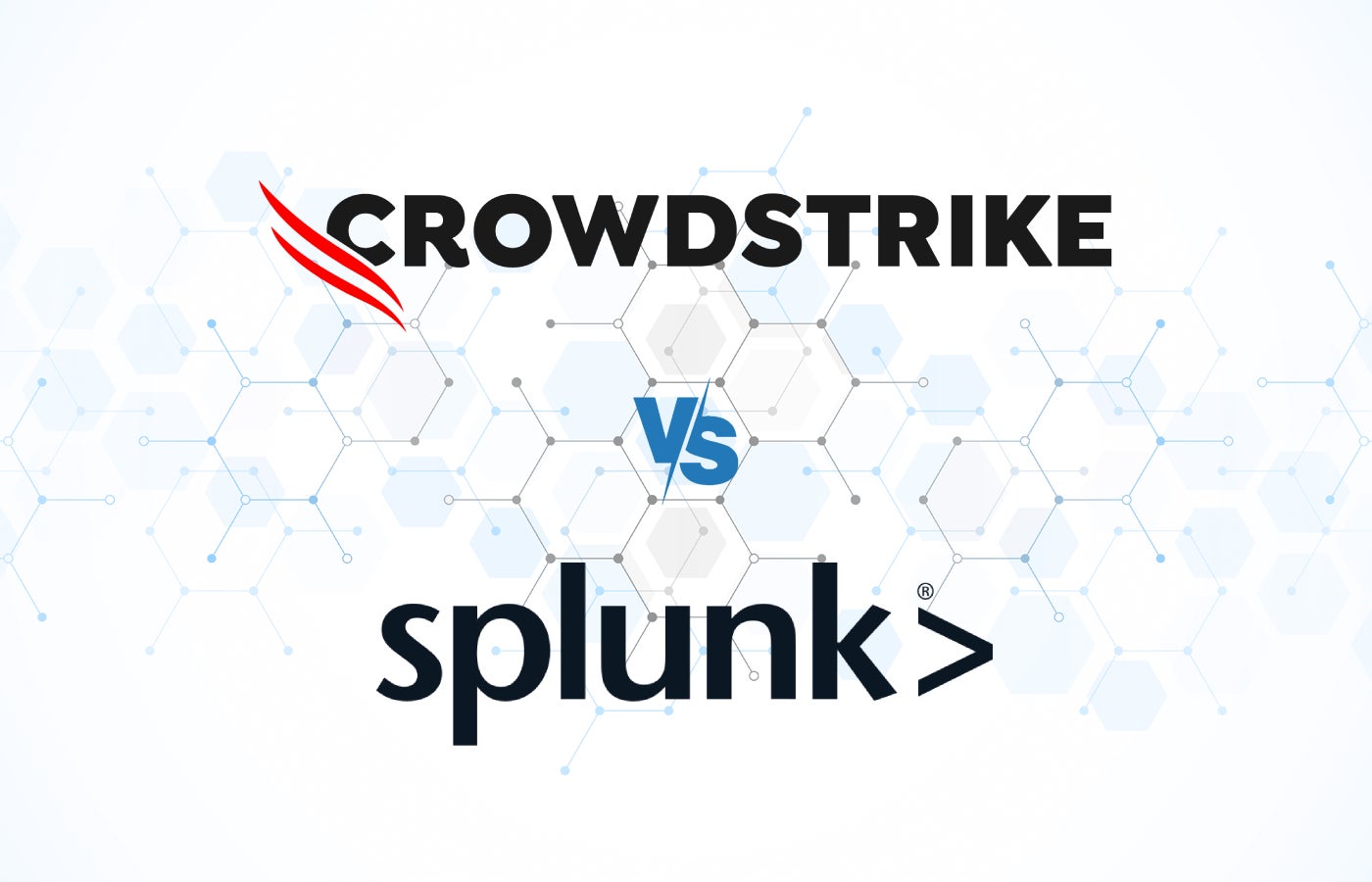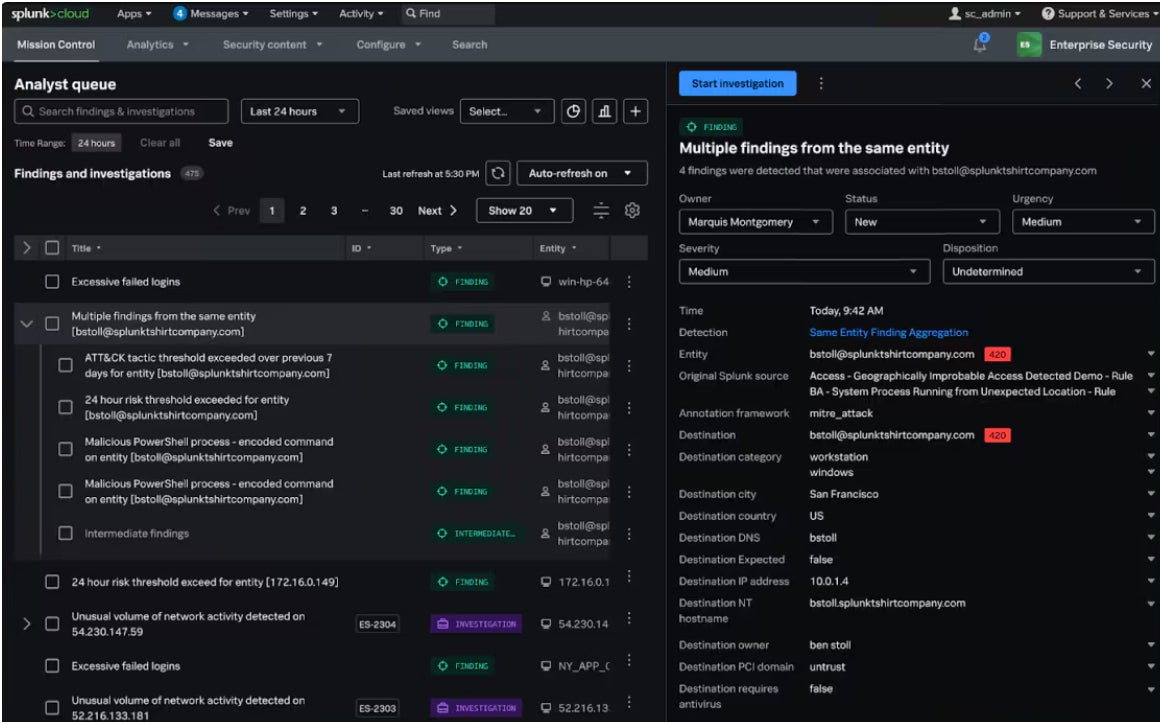- These flagship OnePlus earbuds are a great buy at full price - but now they're even cheaper
- These mainline OnePlus earbuds are a great buy at full price - but now they're $30 off
- The new Outlook for Windows adds Copilot and other perks, but I still prefer the classic version
- I replaced my iPhone with an e-paper Android handset - here's my buying advice a month later
- #Infosec2025: Cybersecurity Support Networks Too Fragmented for SMBs
CrowdStrike vs Splunk: Which SIEM Solution Is Right for You

Security information and event management solutions are crucial components in any organization’s cybersecurity infrastructure. The combination of their log monitoring and remediation capabilities provides invaluable protection and allows businesses to address potential threats before they cause any real damage.
With this, CrowdStrike and Splunk bring two distinct approaches to their SIEM solutions. On one hand, CrowdStrike’s expertise as an endpoint detection and response leader shows with its Falcon Next-Gen SIEM and unified Falcon platform. Meanwhile, Splunk’s Enterprise Security is regarded as a front-runner in the SIEM space and emphasizes comprehensive visibility and enhanced detections.
In this article, we match these two providers against each other to see which SIEM solution is right for you.
Recommended Alternative: CrowdStrikeCrowdStrike Falcon® Next-Gen SIEM delivers real-time security insights with unmatched speed, lower costs, and native detection capabilities, redefining how SOC teams operate.
Learn More About Falcon Next-Gen SIEM.
|
CrowdStrike vs Splunk: Comparison table
| Starting price | ||
| 2024 IDC MarketScape SIEM for Enterprises report | ||
| Integrations | ||
| User experience (Gartner rating) | ||
| Free trial | ||
|
|
CrowdStrike vs Splunk: Pricing
CrowdStrike pricing
CrowdStrike doesn’t provide explicit pricing for its Falcon Next-Gen SIEM platform. With this, I recommend contacting CrowdStrike’s sales team directly for a full quotation and price details. Personally, I find this a bit peculiar since it has clear pricing for its EDR and XDR offerings.
However, they do have a fair amount of trial and demo options:
- Interactive demo that’s fully accessible to all users; provides a slideshow-like tour of Falcon Next-Gen SIEM.
- Request a test drive; provide organization details for more in-depth trial and access.
There are also several video demos on the next-gen SIEM in action itself. They have a dashboard overview, videos on how to maximize workflow automations, and data onboarding, among others.
Splunk pricing
Similarly, Splunk’s Enterprise Security SIEM doesn’t have official pricing displayed on its product page. Like CrowdStrike, reaching out to the Splunk sales team is the best way to get price info.
Splunk also provides a number of useful tours and demos:
- Guided product tour; requested via official site.
- Splunk Enterprise Security Product Brief; available for public viewing and download via product page.
On the Splunk Enterprise Security page, you can also access e-books on SIEM guides, Splunk use cases, and risk-based alerting, after going through an initial sign-up.
CrowdStrike vs Splunk: Feature comparison
Area of focus
At the onset, it’s important to acknowledge the difference between CrowdStrike and Splunk’s product focus in relation to their SIEM solutions. While CrowdStrike is a household name in cybersecurity, it is most known for its endpoint security, EDR, and extended detection and response services. In fact, its CrowdStrike Falcon Next-Gen SIEM has only been around for less than a year — which isn’t a knock on quality but is an important note for this comparison.
On the flipside, Splunk has been in the SIEM industry for well over a decade, having been recognized as a global SIEM leader way back in 2013. Splunk Enterprise Security alone is also now on its eighth version, showing a big gap in the maturity of the two products.
If your organization prefers a provider with its sole focus on SIEM, Splunk is probably the better choice. On the other hand, CrowdStrike can be a solid pick if you want a newer solution or if your business already has CrowdStrike heavily integrated in your security stack.
Threat detection
For threat detection, CrowdStrike Next-Gen SIEM utilizes its Falcon platform in integrating both its global threat intelligence and third-party data sources. It has AI-powered detection across endpoints, cloud, and identity sources to ensure robust protection and overall visibility.
Meanwhile, Splunk Enterprise Security implements risk-based alerting that ensures security analysts are focused on the highest priority threats and aren’t bogged down by thousands of less critical alerts. This helps lessen analyst burnout, ensuring all imminent threats can be mitigated by security operation center personnel immediately.

Independent assessments
Looking at recent independent reports, both CrowdStrike Next-Gen SIEM and Splunk Enterprise Security perform well by industry standards.
In the 2024 IDC MarketScape: Worldwide SIEM for Enterprise vendor report, CrowdStrike Falcon Next-Gen SIEM was named a Major Player, while Splunk was recognized as a Leader. In the assessment, Splunk was praised for its deployment flexibility for cloud and hybrid environments, as well as its workload pricing that can accommodate varying budgets and business sizes.
For CrowdStrike Falcon Next-Gen SIEM, its smart integration with its Falcon XDR platform for alerting, incident, and security log management was a specific highlight in the IDC report, especially for existing CrowdStrike XDR customers.
Splunk was also named a Leader in the 2024 Gartner Magic Quadrant for Security Information and Event Management for the tenth consecutive year, being recognized alongside large providers like Microsoft and IBM. It’s clear that Splunk has the advantage in terms of overall industry experience, particularly in the SIEM category.
In contrast, CrowdStrike is yet to be included in Gartner’s SIEM assessment. That being said, I do find it impressive how CrowdStrike was named in the IDC SIEM report with less than 12 months of availability under its belt.
Integrations
Integration-wise, both SIEM solutions allow compatibility with a number of native and third-party software.
CrowdStrike Falcon Next-Gen SIEM supports more than 500 data sources and integrations. Among these are Amazon Web Services, Microsoft Azure, and Google Cloud for Cloud/Infrastructure, as well as Palo Alto Networks, Trellix, and Cisco for Firewall/Network.
Meanwhile, Splunk Enterprise Security offers an impressive 2,200+ software integrations and 2,800+ partner and community-built applications. This includes AWS, Microsoft Azure, Google Cloud, OpenShift, Kubernetes, Kafka, and Apache Cassandra. It also features native integration with Splunk’s Security Orchestration, Automation, and Response automation playbooks and actions.
CrowdStrike pros and cons
Pros of CrowdStrike
- Integrates well with CrowdStrike Falcon XDR.
- AI-powered threat detection.
- Seamless deployment.
Cons of CrowdStrike
- Relatively new SIEM provider.
Splunk pros and cons
Pros of Splunk
- Industry leader in SIEM space since 2013.
- 2,200+ software integrations.
- Simple but effective user interface.
Cons of Splunk
- Can be expensive, depending on business size.
SEE: Everything You Need to Know about the Malvertising Cybersecurity Threat (TechRepublic Premium)
Should your business use CrowdStrike or Splunk?
As of November 2024, Splunk Enterprise Security is the better pick for most businesses looking to invest in a quality SIEM solution.
It’s been a top SIEM since 2013 and is generally considered a default option to consider, no matter the size of the organization. This is evident with its massive 2,200+ integrations’ unified threat detection, investigation, and response; and positive recognition from most independent firms evaluating SIEM providers.
That isn’t to say that CrowdStrike Falcon Next-Gen SIEM isn’t a decent pick in its own right. In less than a year since its inception, it has quickly offered enticing benefits such as strong integration with native CrowdStrike services and telemetry and access to its global threat intelligence database.
Methodology
My comparison of CrowdStrike Falcon Next-Gen SIEM and Splunk Enterprise Security involved an analysis of their respective features, software differences, and overall value proposition.
In particular, I took into account a few key SIEM considerations, such as their main area of focus, threat detection capabilities, independent assessments, and supported integrations.
Research for this article was a combination of reviewing official documentation, advertised use cases, and available demos. In addition, user testimonials on sites like Gartner and Reddit were also considered to round out my final recommendations.

